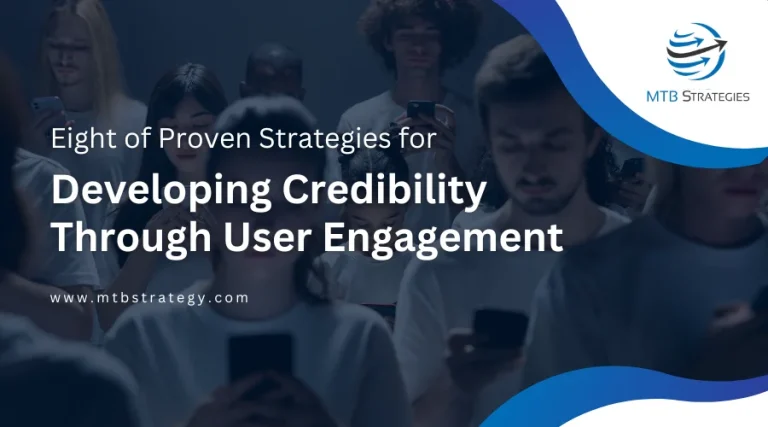Anyone in charge of marketing for a major corporation’s name brand understands the complexities of consumers’ decision-making processes in the retail sector. The customer journey is not linear and frequently incorporates online and offline interactions. You’ll need more than just a customer’s name and address if you want to get in touch with them. Buyer personas tailored to online consumers are a must.
User persona, audience persona, and customer persona all refer to the same thing.
More About Buyer Persona
We create buyer personas to see things from our target audience’s point of view. Keep in mind that each marketing persona stands in for a distinct group of actual consumers.
You can better connect with your target audience by making content that speaks directly to their needs and problems if you take the time to learn about their motivations and challenges. Identifying your personas will help you determine the best way to communicate with them and tailor your approach accordingly. Moreover, you’ll develop more effective methods for guiding them through the various sales cycle stages.
Reasons to Research Buyer Persona
User personas help make decisions about your brand because they allow you to pinpoint specific target audience groups. Using customer personas can improve all aspects of the customer experience, from initial contact to after-sale service.
Marketing Intelligence
You can learn more about your ideal customers and prospects by creating a detailed “buyer persona.” You’ll be better able to address your target market’s needs, wants, and aspirations by tailoring your brand’s positioning, content, messaging, products, and services to them.
The software’s user-friendliness may be a top priority for a startup than for a large corporation, emphasizing the software’s capacity for back-end technology integration, automation, and ongoing professional services.
By creating buyer personas, you can tailor your content, design, and product development to address your target demographics’ unique needs and concerns.
As a result, your conversion rates and LTV among existing customers will improve (CLV).
Your marketing efforts are more likely to fail if you don’t have well-defined buyer personas. Reaching your target demographic with your messaging and gaining new clients will be challenging.
Business Insights
Customer personas can also serve as a navigational aid for expanding your company. They help you zero in on your ideal client, their wants, and your best engagement methods. You’ll know how to interact with potential customers at every stage of the buying process. In addition, if you run a B2B company, creating buyer personas for crucial decision-makers will improve your interactions with them.
You’ll learn who your rivals are and how you can set yourself apart from the pack. You can differentiate yourself from the competition by strategically planning your digital marketing campaigns.
How to Create a Buyer Persona
Step 1: Do Your Research
The first step in developing effective buyer personas is conducting extensive market research to identify the various segments that make up your target audience. Because of this, you’ll know exactly who they are, what they want, and why.
The specifics of your industry, target demographic, etc., will determine the data you include in your customer personas. Possible characteristics of your personas include:
- Age range
- Challenges
- Goals
- Income / Revenue
- Industry
- Interests
- Job Title
- Priorities
- Pain Points
- Products Desired
Your mission is to imagine what it’s like to be a customer and act accordingly. You can learn more about your target market in several ways.
Interview Customers
The best way to learn about your ideal clients is to speak with them.
Your most powerful tool when developing buyer personas is the feedback of actual customers.
Inquire into their wants, needs, and aspirations. What features do they seek, and what issues do they have with current offerings? Find out from new customers how they heard about you and from long-term customers what has kept them coming back.
Do Market Research
You can learn more about your competitors and find ways to set your brand apart by conducting market research. Investigate the advertising strategies and products offered by rival businesses.
Methods that are proven to be successful in market research include:
- Find out what search terms your competitors are focusing on
- Examine the content of their website to identify its intended readers
- Follow the leaders in your field by signing up to receive their emails
- Engage with their online personas
- Participate in related events
Check Your Own Analytics
Google Analytics and similar tools can provide valuable insight into your website’s visitors, including who they are, the pages they visit most often, and where they are in the buying cycle.
With a blog, you can track how many people read individual posts and how many of them led to further exploration of your site via the links provided.
This information can help you determine whether or not your site’s content is meeting the needs of your visitors. It’s also an excellent tool for mapping the customer’s experience as they navigate your website.
Some key indicators that your site’s content isn’t meeting visitors’ needs include a high bounce rate and a low time on page. Informed by these numbers, you can craft a more compelling content strategy.
Step 2: Organize Buyer Persona Data
The next step is sorting through the information you’ve gathered and divided it into groups based on your ideal customer profile. You might want to think about categorizing your information in this way.
Demographic
The term “demographic information” refers to data about a group of people, such as their age, income, education level, occupation, etc.
This information can help you gain a broad comprehension of your target demographic. Furthermore, it can be used to guide targeted promotional initiatives.
Objectives
Potential customers are more likely to purchase if you show them how your product or service will help them meet their needs. Once you identify the factors that drive a specific subset of your target audience, you can tailor your marketing to appeal to them more effectively.
Thoughts & Feelings
Although it’s a bit more nebulous, knowing how your customers feel about particular issues is essential to grasping the motivations behind their actions. The ability to offer that more straightforward solution and superior onboarding experience will set you apart from the competition.
Weak Spots
Each persona will have its problems, though some overlap will occur. A Chief Marketing Officer at a Fortune 500 company will have needs distinct from those of a sole proprietor. Successful messaging requires first identifying the specific challenges faced by each persona.
Step 3: Examine Market Conditions & Trends
The thoughts, feelings, and actions of various demographics can be profoundly affected by changing market conditions and societal norms.
Consumer tastes will inevitably shift and give rise to new product categories.
Furthermore, changes in consumer tastes will need to be accounted for.
However, you must consider broader changes to comprehend your varying personas fully.
Physical Environment
Consumers’ decisions can also be strongly influenced by their actual physical experiences. It ranges from minor irritations like seasonal allergies to major setbacks like recuperating from surgery. A child’s birth or a car crash are two examples of life events that can qualify. More insight into what drives various demographics can be gained by investigating their physical experiences.
Political Climate
As much as we’d like to pretend otherwise, your buyer personas will be influenced by political factors. Certain services or goods may be associated with a specific political group or candidate for various reasons. It’s possible that these generalizations aren’t accurate, but people still act on them.
The people who buy these cars tend to have this impression. If your company sells such cars, advertising to people who don’t share your political beliefs may need to be quite different.
Social Factors
How your target audience thinks and feels may be drastically altered by cultural norms and priorities shifts. For instance, consumers’ expectations of brands have shifted significantly in recent years. Many buyers look for companies that aren’t just concerned with making a profit but also about doing good in the world. Social trends affecting your target audience’s perception of your products or services should be incorporated into your buyer personas.
Step 4: Create an Empathy Map
While a buyer persona profile can shed light on your target demographic, an empathy map can reveal what it’s like to be in the customer’s shoes from their point of view.
User experience designers can benefit greatly from creating empathy maps, representing how different points in the user’s journey will likely affect the audience’s emotional response (UX design). The user experience design process can be guided by an empathy map created collaboratively by stakeholders, product managers, marketing, sales, and creative teams.
Step 5: Emphasize Key Events in Your Buyer Persona
Based on this information, you can better understand the “moments” that prompt your target audience to seek a solution to a problem actively.
For this reason, these junctures in the buyer’s journey are pivotal turning points. This is it if you want to know when someone will actually do something.
Step 6: Create Your Persona
Finalizing the design is the last step in developing buyer personas. Even though you may have dozens of research pages, your final persona should only take up one. When something is too difficult to use, fewer people will bother to learn how to use it.
Conclusion
As a final step, it is essential to implement your customer personas. Social media, content, customer service, user experience, design, search engine optimization, leadership, etc.
Don’t just send your personas around in an email to various teams. Always have the most recent version stored in a digital asset management folder. If you update your buyer personas, everyone will be immediately provided with the latest details.






